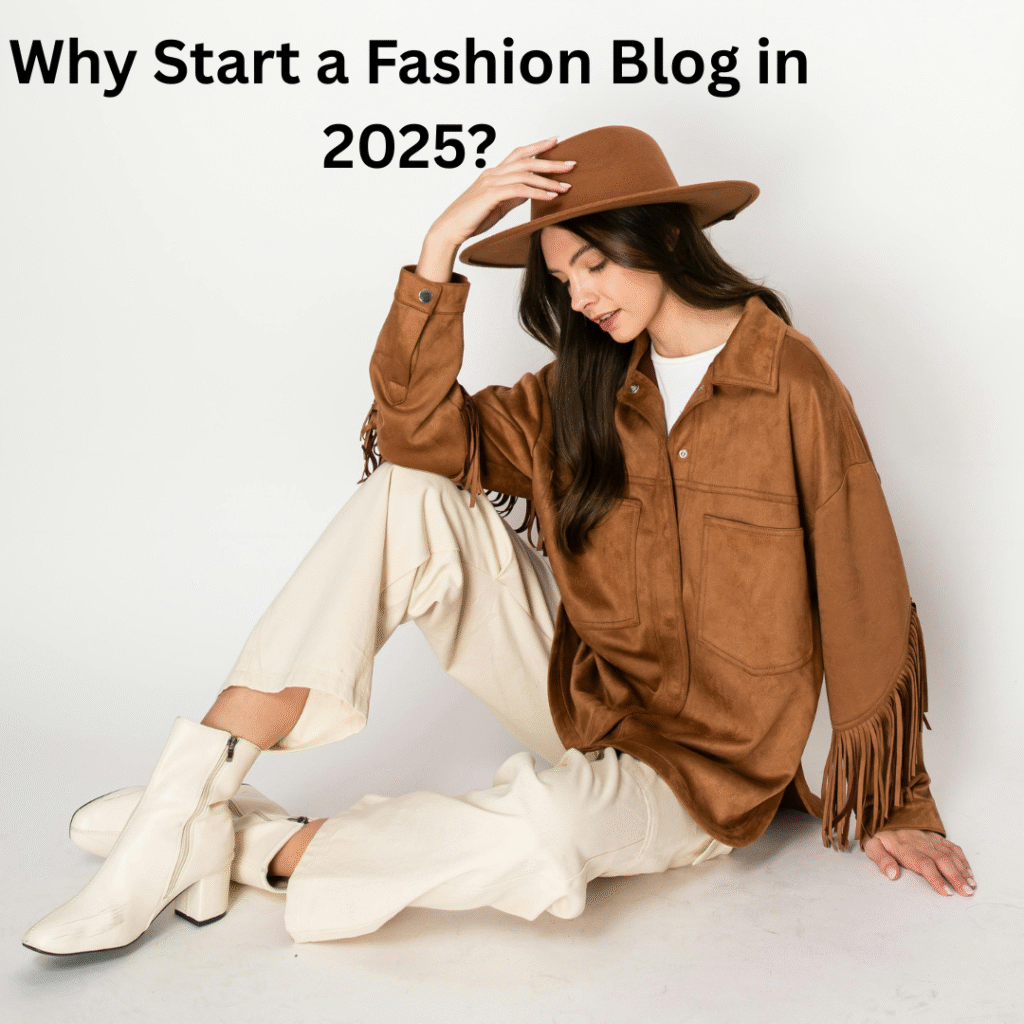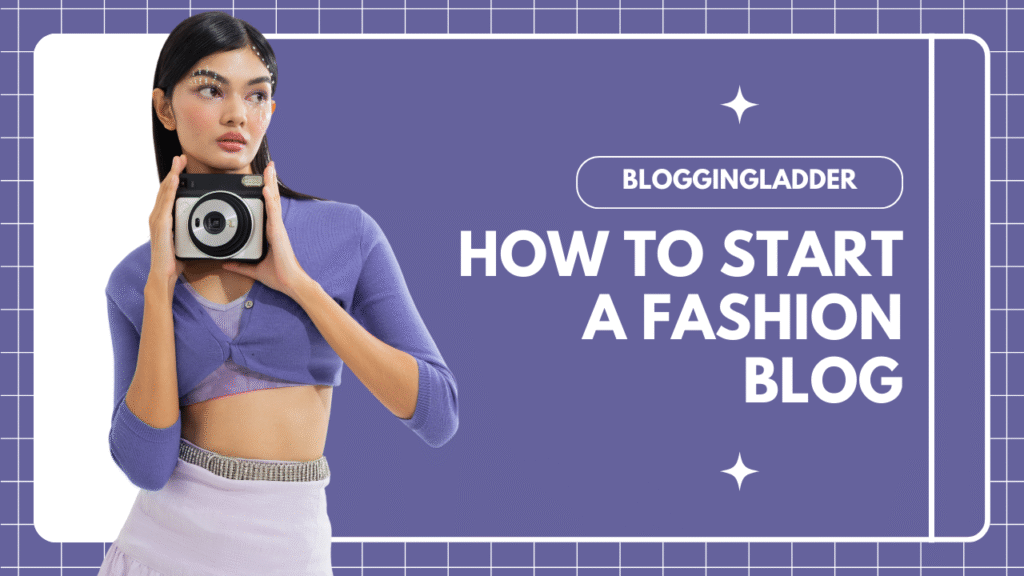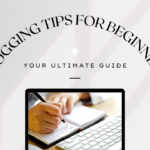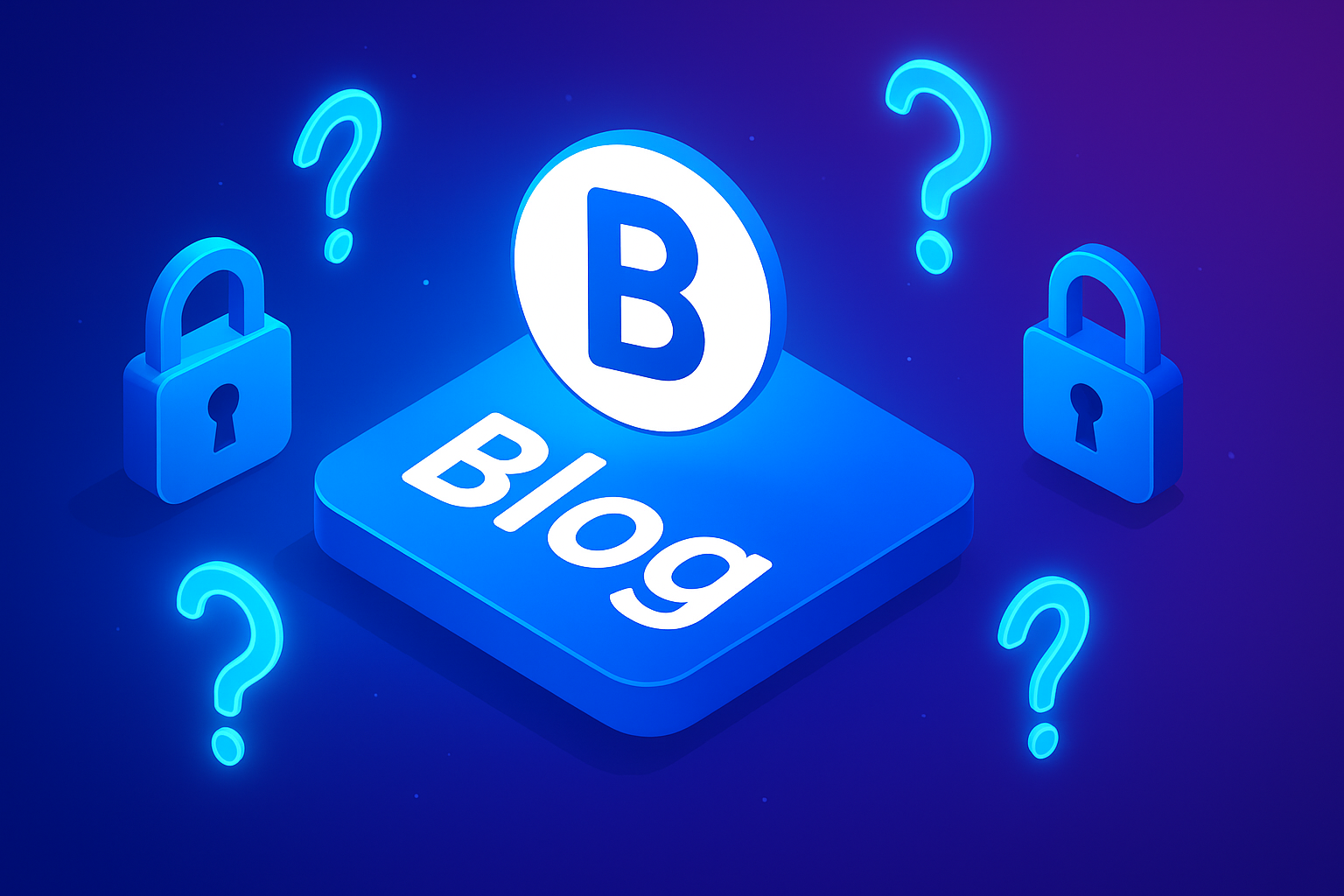Are you passionate about fashion and love expressing yourself through style? Do you dream of sharing your fashion ideas, outfit inspirations, and trend insights with the world? If yes, starting a fashion blog could be your perfect platform to shine.
A fashion blog is more than just posting stylish pictures — it’s about building a personal brand, inspiring others with your creativity, and possibly turning your love for fashion into a full-time career. Whether you’re into street style, sustainable fashion, high-end luxury, or DIY looks, your voice and vision matter in the world of online style.
At bloggingladder, we help you launch your fashion blog step-by-step — from choosing a blog name and finding your niche to building your website, creating stunning content, and growing your audience on social media and beyond.
It’s time to turn your fashion sense into a powerful online presence. Let your style speak — and start your fashion blogging journey today!
Why Start a Fashion Blog in 2025?

Fashion blogging blends creativity with opportunity. Here’s why it’s worth starting:
- Express Your Style: Share outfit ideas, fashion tips, or trend forecasts to inspire readers.
- Earn Income: Fashion bloggers like Chiara Ferragni earn $50,000-$200,000/month through affiliate marketing, sponsored posts, and brand collaborations (Forbes).
- Boost SEO: Blogs drive organic traffic, with 61% of consumers influenced by blog content (Content Marketing Institute).
- Flexibility: Blog from anywhere, perfect for fashion influencers or style enthusiasts.
- Low Costs: Start for ~$35/year with web hosting and a domain name.
This fashion blogging guide covers everything from choosing a niche to monetizing your blog, with SEO strategies to rank high on Google.
Step 1: Choose Your Fashion Blogging Niche
Selecting a fashion blogging niche focuses your content, attracts a targeted audience, and improves SEO through keyword optimization. A niche sets your blog apart in the competitive fashion blogging space.
Tips for Choosing a Fashion Blogging Niche
- Passion-Driven Topics: Blog about what excites you, like sustainable fashion, plus-size fashion, or menswear trends.
- Market Demand: Use Google Trends or AnswerThePublic to identify popular niches (e.g., ethical fashion or capsule wardrobes).
- Profitability: Niches like luxury fashion or fashion accessories have high affiliate marketing potential .
- Low Competition: Use Ahrefs or SEMrush to find long-tail keywords like sustainable fashion tips for beginners with less competition.
Popular Fashion Niches for 2025:
- Sustainable and ethical fashion
- Streetwear and urban style
- Plus-size fashion
- Minimalist wardrobes
- Luxury fashion reviews
Example: The Blonde Abroad combines fashion and travel blogging, focusing on travel-inspired outfits to attract a unique audience.
Tip: Target long-tail keywords like how to start a sustainable fashion blog to rank faster on search engines.
Step 2: Pick a Blogging Platform
Choosing the right blogging platform ensures ease of use, customization, and SEO performance. Here are the top platforms for fashion blogs in 2025:
- WordPress.org (Self-Hosted): Powers 43% of websites (W3Techs), offering plugins like Yoast SEO and full control. Ideal for professional fashion bloggers.
- Wix: Drag-and-drop builder with SEO tools but limited flexibility for monetization.
- Squarespace: Stylish templates for visual fashion blogs but higher costs and fewer plugins.
- Blogger: Free but outdated, with limited SEO control.
- Medium: Great for fashion storytelling but no domain ownership.
Recommendation: WordPress.org is the best blogging platform for fashion blogging due to its SEO capabilities, customization, and visual plugins like Easy Social Share Buttons. Pair it with a web hosting provider like Hostinger.
Tip: A WordPress blog with SEO plugins enhances search engine rankings for fashion content.
Step 3: Choose a Domain Name
Your domain name is your blog’s address (e.g., www.yourfashionblog.com) and impacts branding and SEO. A strong domain name is memorable and keyword-rich.
Tips for Choosing a Domain Name
- Reflect Your Niche: Use fashion-related keywords (e.g., StyleVibe.com for a fashion blog).
- Keep It Short: Aim for 6-15 characters (e.g., ChicBit.com).
- Avoid Hyphens/Numbers: They hurt SEO and confuse readers.
- Prefer .com: Chosen by 47% of websites for credibility (Statista).
- Check Availability: Use Namecheap or GoDaddy to secure your domain.
Cost: ~$10-$15/year via Namecheap or free with Hostinger’s annual plans.
Example: Song of Style uses a catchy, niche-focused domain (songofstyle.com) to build brand authority.
Tip: A keyword-optimized domain like SustainableFashionBlog.com boosts SERP rankings.
Step 4: Select a Web Hosting Provider
Web hosting stores your blog’s files and ensures it’s accessible online. A reliable web hosting provider is essential for site speed, uptime, and SEO.
Top Web Hosting Providers for Fashion Blogs
- Hostinger: Starts at $2.99/month, includes LiteSpeed servers, free SSL, and a free domain. Ideal for budget web hosting (TrustPilot: 4.6/5).
- Bluehost: WordPress.org-recommended, starts at $2.95/month, offers free domain and SEO tools. Great for blogging beginners (Capterra: 4.4/5).
- SiteGround: Premium support and security, starts at $3.99/month. Suits high-traffic fashion blogs (G2: 4.3/5).
- A2 Hosting: Turbo Servers for 20x faster speeds, starts at $1.75/month. Perfect for image-heavy fashion blogs (TrustPilot: 4/5, per your July 21, 2025 interest in A2 Hosting).
Recommendation: Hostinger is the best web hosting for fashion blogging beginners due to its affordability, fast hosting, and free domain. Bluehost is ideal for WordPress hosting.
Hosting Features to Prioritize
- Uptime: 99.9% uptime ensures website reliability (CNET reports Hostinger at 99.98%).
- Speed: NVMe storage and Cloudflare CDN reduce page load times for fashion photos.
- Security: Free SSL and DDoS protection enhance SEO and user trust.
- Support: 24/7 live chat for quick issue resolution.
- Scalability: Plans that grow with your blog traffic.
Tip: Choose a fast web hosting provider to improve core web vitals and SEO rankings.
Step 5: Set Up Your Fashion Blog
Here’s how to set up your fashion blog using WordPress.org and Hostinger:
- Sign Up for Hosting: Visit Hostinger.com, choose a plan (e.g., Premium Shared Hosting), and register your domain name.
- Install WordPress: Use Hostinger’s one-click WordPress installation via hPanel.
- Log In: Access your WordPress dashboard at yourdomain.com/wp-admin.
- Select a Theme: Install a mobile-responsive WordPress theme like Astra or Divi (visual-heavy for fashion blogs).
- Customize Design: Use the WordPress Customizer to add your logo, colors, and navigation menus.
- Install Plugins:
- Yoast SEO: Optimizes fashion posts for search engines.
- WPForms: Adds contact forms and newsletter sign-ups.
- Smush: Compresses fashion photos for faster loading (per your July 20, 2025 interest in image optimization).
- LiteSpeed Cache: Boosts site speed.
- Easy Social Share Buttons: Enhances social media sharing for outfit posts.
- Jetpack: Adds security and analytics.
Cost: ~$35-$100/year for hosting and domain, with free themes and plugins.
Tip: A mobile-friendly WordPress theme and SEO plugins like Yoast improve search engine rankings for fashion content.
Step 6: Design Your Fashion Blog
A visually stunning fashion blog enhances user experience and encourages longer dwell time, a key SEO metric. Your design should showcase fashion photography and brand identity.
Design Tips
- Choose a Visual Theme: Divi or OceanWP offer image-heavy templates for outfit photos.
- Create a Logo: Use Canva (free) to design a fashion-inspired logo (e.g., a hanger or stiletto).
- Optimize Navigation: Include a menu with pages like Home, Outfits, About, and Contact.
- Add Essential Pages:
- About Page: Share your fashion story to build authority (e.g., “Style enthusiast sharing sustainable fashion tips”).
- Outfits Page: Organize lookbooks by category (e.g., Casual, Formal, Sustainable).
- Contact Page: Add a WPForms form for reader engagement.
- Privacy Policy: Ensure GDPR compliance for ads or email marketing.
- Use High-Quality Images: Source fashion photos from Unsplash, Pixabay, or Pexels (free, per your July 20, 2025 conversation). Take your own outfit photos with a smartphone and natural lighting.
Image Optimization Tips :
- Add alt text with keywords (e.g., sustainable fashion outfit ideas).
- Use royalty-free images and check Creative Commons licenses to avoid copyright issues.
- Compress images with TinyPNG to maintain site speed.
- Create fashion infographics with Canva for style guides.
Tip: Optimize image alt text and page titles with long-tail keywords like sustainable fashion trends 2025 for SEO.
Step 7: Create Compelling Fashion Blog Content
Content is the heart of your fashion blog. High-quality, SEO-optimized content drives organic traffic and engages fashion enthusiasts.
Content Creation Tips
- Know Your Audience: Write for budget fashionistas, luxury shoppers, or sustainable style lovers (e.g., Affordable Capsule Wardrobe Ideas).
- Keyword Research: Use Google Keyword Planner or Ubersuggest to find long-tail keywords like ethical fashion brands for beginners.
- Blog Post Ideas:
- Style Guides: How to Build a Minimalist Wardrobe on a Budget.
- Fashion Tips: 5 Ways to Style a White T-Shirt.
- Personal Stories: My Journey to Sustainable Fashion.
- Product Reviews: Best Sustainable Sneakers for 2025.
- SEO Optimization:
- Include primary keywords in title tags (under 60 characters), H1 headings, and first 100 words.
- Use secondary keywords in subheadings and image alt text (e.g., streetwear fashion trends).
- Add internal links to related posts (e.g., link Summer Outfits to Beach Style Guide).
- Link to authority sites like Vogue for credibility.
- Post Structure:
- Catchy headline (e.g., 10 Must-Have Sustainable Fashion Pieces for 2025).
- Engaging intro with a fashion story or trend insight.
- Scannable H2/H3 subheadings and bullet points.
- Call-to-action (e.g., “Shop this look on Amazon!“).
- Post Length: Aim for 1,500-2,500 words for in-depth fashion guides to rank higher (Backlinko).
Tools:
- Grammarly: Ensures error-free writing.
- Canva: Creates fashion infographics and social media visuals.
- Tasty Pins: Optimizes Pinterest sharing for outfit posts.
Tip: Write evergreen content like capsule wardrobe tips to maintain SEO rankings over time.
Step 8: Promote Your Fashion Blog
Promotion drives blog traffic and grows your fashion audience. Use these strategies to maximize reach:
Promotion Strategies
- Social Media: Share outfit photos and blog posts on Instagram (use Reels for fashion tips), Pinterest (ideal for visual fashion content, with 80% of users discovering style ideas there), and TikTok. Create Pinterest pins with Canva for lookbooks.
- Email Marketing: Build an email list with MailerLite (free for 1,000 subscribers, per your July 21, 2025 conversation) to send fashion newsletters.
- SEO Optimization: Use Yoast SEO to optimize meta descriptions and sitemaps for Google rankings.
- Guest Blogging: Write for fashion blogs like Who What Wear to earn backlinks and traffic.
- Fashion Communities: Engage in Reddit (r/fashion) or Facebook Groups like Sustainable Fashion Community.
- Paid Ads: Run Google Ads or Facebook Ads targeting long-tail keywords like sustainable fashion trends 2025 (per your July 21, 2025 interest in ads).
Tip: Use social media hashtags like #FashionBlogging or #SustainableStyle to boost visibility.
Step 9: Monetize Your Fashion Blog
Monetizing your fashion blog can generate passive income. Here are proven strategies for 2025:
- Affiliate Marketing: Promote clothing, accessories, or beauty products via Amazon Associates, RewardStyle, or ShopStyle (per your July 21, 2025 interest in affiliate programs). Earn 4-10% commissions.
- Sponsored Posts: Partner with fashion brands for paid content ($100-$5,000/post, per BloggingWizard).
- Google AdSense: Display ads for pay-per-click revenue. Requires ~10,000 monthly views for significant earnings.
- Sell Digital Products: Offer style guides, wardrobe planners, or lookbook PDFs via Gumroad or Etsy (per your July 27, 2025 interest in digital products).
- Fashion Photography: Sell royalty-free fashion photos on Shutterstock or Adobe Stock (per your July 20, 2025 interest in images).
- Memberships: Create Patreon tiers for exclusive style tips or outfit guides.
Tips:
- Start with affiliate marketing for low-effort income (e.g., RewardStyle links in outfit posts).
- Use Google Analytics to track traffic sources and optimize monetization.
- Ensure GDPR compliance for ads and email marketing.
Tip: Optimize affiliate posts with keywords like best sustainable fashion brands 2025 to increase click-through rates.
Step 10: Optimize for SEO
SEO is essential for driving organic traffic to your fashion blog. In 2025, Google prioritizes user experience, content quality, and core web vitals.
SEO Best Practices
- Keyword Research: Use SEMrush or Google Keyword Planner to find long-tail keywords like minimalist wardrobe ideas for beginners.
- On-Page SEO:
- Place primary keywords in title tags (under 60 characters), H1 headings, and first 100 words.
- Use secondary keywords in subheadings and image alt text (e.g., ethical fashion tips).
- Optimize meta descriptions (160 characters) with keywords.
- Technical SEO:
- Improve site speed with LiteSpeed Cache or WP Rocket.
- Use free SSL certificates for secure HTTPS.
- Submit a sitemap to Google Search Console.
- Content Quality: Write in-depth fashion guides (1,500+ words) to outrank competitors.
- Backlinks: Earn high-quality backlinks via guest blogging on fashion sites.
- Mobile Optimization: Use responsive themes for mobile users.
Tools:
- Google Search Console: Tracks keyword rankings and site errors.
- Yoast SEO: Guides on-page SEO.
- GTmetrix: Tests site speed.
Tip: Target local SEO keywords like best thrift stores in New York to attract niche fashion audiences.
Step 11: Analyze and Grow Your Blog
Regular analysis helps optimize blog performance and audience engagement.
Analytics Tools
- Google Analytics: Tracks page views, bounce rates, and traffic sources.
- Google Search Console: Monitors keyword performance and click-through rates.
- Jetpack Stats: Provides real-time analytics for WordPress blogs.
- Hotjar: Uses heatmaps to analyze reader behavior.
Growth Strategies
- Update Content: Refresh style guides with new trends or keywords to maintain SEO rankings.
- Engage Readers: Respond to comments and emails to build a fashion community.
- Test Performance: Use Pingdom to optimize page load times.
- Experiment with Formats: Try fashion videos or Instagram Reels to diversify content.
Tip: Use analytics to identify high-performing keywords like sustainable fashion tips and create more content around them.
Common Fashion Blogging Mistakes to Avoid
- Broad Niche: Focus on a specific fashion niche (e.g., ethical fashion vs. general fashion).
- Ignoring SEO: Optimize keywords and site speed from the start.
- Inconsistent Posting: Publish 1-2 fashion posts/week to build authority (HubSpot).
- Neglecting Email Lists: Use MailerLite to start list building early.
- Poor Photography: Invest in fashion photography skills to avoid low-quality outfit images.
Success Stories in Fashion Blogging
- *Song of Style: Earns $100,000+/month through affiliate marketing and brand collaborations (Forbes).
- *The Blonde Abroad: Combines fashion and travel for sponsored posts and affiliate income.
- *Sincerely Jules: Leverages Instagram and lookbooks for fashion brand partnerships.
These examples show that quality content and SEO strategies can make fashion blogging highly profitable.
Expert Tips for Fashion Blogging Success
- Post Consistently: Aim for 2-3 fashion posts/week (BloggingWizard).
- Leverage Pinterest: Create outfit pins for visual niches like streetwear or minimalist fashion.
- Learn SEO: Take free Moz or Coursera courses for keyword optimization.
- Network: Join fashion blogging communities like Fashion Bloggers Network for backlinks.
- Invest in Tools: Use Canva Pro ($12.99/month) for fashion visuals or Ahrefs ($99/month) for keyword research.
Conclusion: Launch Your Fashion Blog Today
Starting a fashion blog in 2025 is an exciting opportunity to share your style, build an online presence, and earn passive income. By following this how to start a fashion blog guide, you can:
- Choose a profitable fashion niche and keyword-optimized domain.
- Set up a WordPress blog with Hostinger or Bluehost.
- Create SEO-friendly fashion content to drive organic traffic.
- Monetize through affiliate marketing, sponsored posts, or digital products.
With startup costs as low as $35/year and tools like Yoast SEO, Canva, and MailerLite, fashion blogging is accessible to beginners. Visit Hostinger.com or Bluehost.com to start your fashion blog today. For more fashion blogging tips, check WPBeginner or Song of Style.
Tip: Focus on long-tail keywords like how to start a sustainable fashion blog to attract niche audiences and rank faster on Google.



